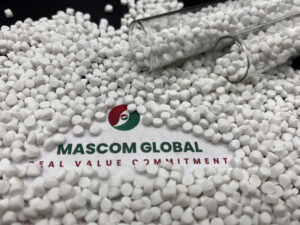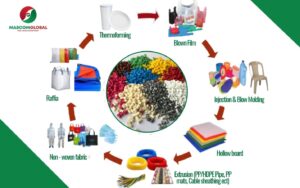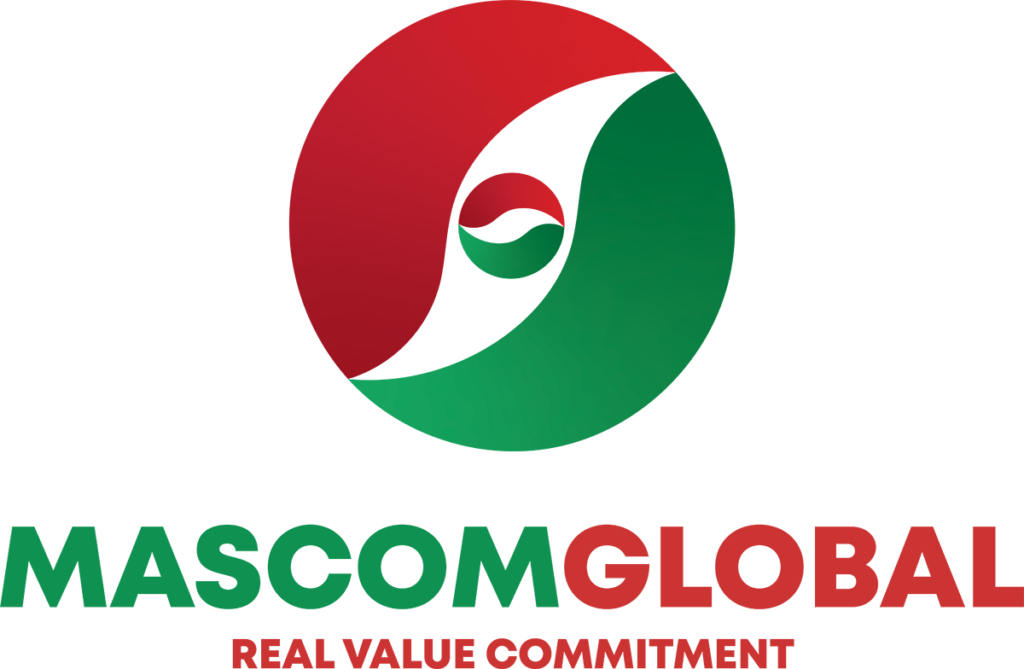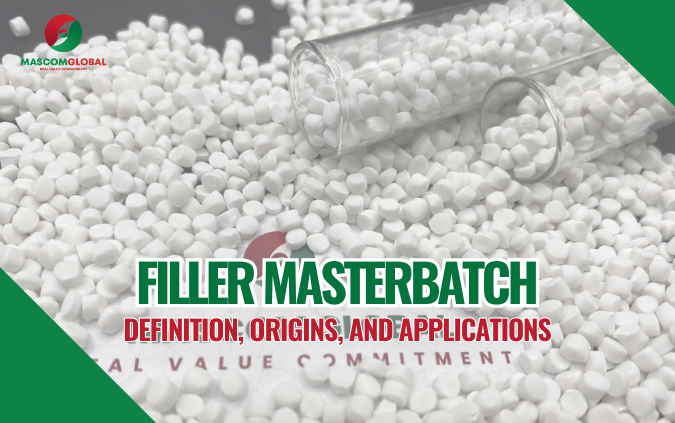In the realm of modern plastic manufacturing, filler masterbatch has emerged as a key material for improving production efficiency, reducing costs, and enhancing product performance. As industries seek innovative solutions to balance affordability with quality, filler masterbatch plays a vital role in transforming the way plastic products are produced.
This article will explore the definition of filler masterbatch, trace its origins, and highlight its wide-ranging applications across industries, emphasizing its significance in material science and manufacturing efficiency.

What Is Filler Masterbatch ?
Filler masterbatch is a concentrated mixture of filler materials combined with a polymer matrix, usually in the form of pellets or granules. These are added to plastic products during the manufacturing process. The filler refers to inexpensive materials—such as calcium carbonate, talc, or barium sulfate—that are combined with more costly polymers like polyethylene or polypropylene.
The primary purpose of filler masterbatch is to reduce production costs while maintaining or even improving the physical properties of the final plastic product. Besides cutting costs, filler masterbatch can enhance properties such as rigidity, thermal resistance, and impact strength, depending on the type of filler used.
The Origins of Filler Masterbatch
The development of filler masterbatch stems from the need for cost-effective and sustainable plastic production. Initially, plastic manufacturers relied solely on pure polymer resins, resulting in high production costs, especially in high-volume sectors like packaging.
While using fillers in plastics was not a new concept, early methods often led to uneven dispersion and inconsistent product quality. The invention of filler masterbatch revolutionized the industry by providing pre-compounded blends of fillers and polymers, ensuring uniform distribution and superior product consistency.
This breakthrough enabled manufacturers to incorporate large amounts of filler without sacrificing the mechanical or aesthetic properties of plastic products. Today, filler masterbatch is an essential material across various industries, from packaging to automotive, helping meet production demands affordably.
What are filler masterbatch’s applications in the plastic industry?
Thanks to its versatility, this functional additive finds applications across many industries. Its ability to reduce costs, improve product properties, and optimize production makes it indispensable in modern manufacturing.

1. Cost Reduction and Material Efficiency
One of the primary advantages of filler masterbatch is its ability to drastically reduce the cost of producing plastic products. By replacing a portion of the polymer with inexpensive filler materials, manufacturers can significantly lower material costs. This is particularly valuable in high-volume production sectors such as packaging, where keeping costs low while maintaining product quality is crucial.
2. Enhancing Mechanical and Thermal Properties:
Beyond cost savings, filler masterbatch also improves the mechanical and thermal properties of plastics. For instance, fillers like calcium carbonate increase the rigidity, tensile strength, and overall durability of plastic products. Filler masterbatch can also enhance the plastic’s resistance to heat, making it suitable for applications where temperature stability is essential, such as in electrical or automotive components.
3. Applications in Packaging
In the packaging industry, filler masterbatch is widely used to produce lightweight, durable, and cost-effective packaging materials. By incorporating filler, manufacturers can reduce the amount of polymer used, making packaging more affordable while still maintaining strength and flexibility. Additionally, the use of fillers can improve the barrier properties of packaging materials, such as increasing resistance to moisture or UV light, which is vital for preserving food products.
4. PP Non-woven Fabrics Application
Filler masterbatch is widely used in the production of polypropylene (PP) nonwoven fabrics to reduce costs and enhance material properties. By replacing a portion of the expensive polymer with inexpensive fillers like calcium carbonate, manufacturers can lower production costs while maintaining the fabric’s performance. Filler masterbatch improves the stiffness, thermal stability, and rigidity of PP nonwoven fabrics, making them suitable for applications in hygiene products, medical textiles, and automotive components. It also enhances the fabric’s bulk and volume, improves production efficiency, and allows for customization of specific properties. Additionally, this additive can contribute to sustainability by reducing the consumption of petroleum-based polymers. Ultimately, it offers cost-effective and high-performance solutions for a wide range of industries.
5. PP Woven Application
This additive enhances the fabric’s rigidity, dimensional stability, and thermal resistance, making it suitable for applications in industries such as packaging, agriculture, and construction. It also helps increase the bulk of the fabric without adding weight, improving processability and production efficiency. Additionally, it allows for customization of fabric properties to meet specific requirements, making it a cost-effective solution for high-volume PP woven fabric production.
6. Environmental Considerations:
Beyond cost and performance, the use of this functional additive can contribute to sustainability efforts. By replacing a portion of petroleum-based polymers with inorganic fillers, manufacturers can reduce their reliance on fossil fuels, making their products more environmentally friendly. Additionally, some fillers, such as recycled materials, can further contribute to a circular economy by repurposing waste materials for new applications.
Conclusion
Filler masterbatch represents a critical advancement in plastic manufacturing. It not only reduces production costs but also enhances mechanical and thermal properties, contributing to greater sustainability. Whether in packaging, automotive, or textile industries, filler masterbatch has become an indispensable tool for efficient, cost-effective production.
As industries continue to evolve with a focus on efficiency and environmental responsibility, filler masterbatch will remain a driving force in delivering high-performance plastic products to meet global demand.
📩 Contact Information
We have different additives for your application. If you have any need, please don’t hesitate to contact with us to have the best offer. Thank you!
📞Phone: (+84) 326 169 955
✉ Gmail: info@mascomglobal.com
📍Address: Tien Tien Industrial, Quang Tien Commune, Hoa Binh, Vietnam
My Dinh Plaza 2 Building, 02 Nguyen Hoang Str., Nam Tu Liem Dist., Hanoi, Vietnam
📍Facebook: Mascom Global

